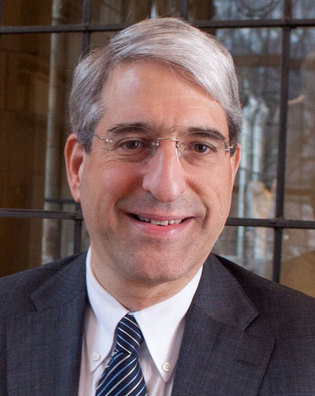 loading
loading
Q&A: Peter SaloveyBuilding, in more ways than oneThe president talks faculty and facilities. The Yale Alumni Magazine regularly holds a conversation with Yale president Peter Salovey ’86PhD to provide a forum in which alumni can learn his views. (Interviews are conducted both in person and by e-mail and condensed for print.)  Mark OstowIn this issue, Salovey talks about shaping Yale’s academic priorities. View full imageY: During much of the twentieth century, Yale emphasized the humanities over the sciences. But today a great university needs an extraordinary science program, and Yale has been ramping up. How do you set priorities among the disciplines? S: Over the past few years we’ve built an academic leadership structure for the university. This has included appointing eight new deans of schools—which is more than half the deans; a new executive director of the Association of Yale Alumni; and five vice presidents. We’ve also balanced our budget and, more importantly, structured it in a way that will allow us to manage the university in a financially responsible way, through good times and bad. Renewed leadership and budget equilibrium free us to plan Yale’s academic priorities for the future. We can use three overarching strategies. One is to build on our strengths. The second is to improve areas where we are not yet where we need to be—specifically, those areas in which a twenty-first-century world-class research university requires strength. And the third is to align our program of building and renovating facilities with our strategy for the faculty and students who will work and learn in those spaces. Those general strategies will play out differently across the university in the sciences, social sciences, humanities, and arts. In the arts and in the humanities, we are extremely strong. Our suite of professional schools in the arts is unmatched by any research university. And our humanities departments in the arts and sciences, combined with the humanities within our law school and divinity school, are simply superb. We have great strength in the social sciences across the university: in departments like economics, political science, and psychology, and in the schools of law, management, forestry and environmental studies, and public health. In the sciences, we are excellent in some subfields, and very, very good in others. But to be an outstanding university we need truly outstanding science. Strength in science is a consistent feature of the top-ranked international research universities. Y: How are you planning to achieve that? S: In our building plans and in our efforts to recruit the very best faculty to Yale, we will need to place special emphasis on the sciences, technology, engineering, and data science across the university. You can see the beginning of that effort in the major renovation projects going on in the Sterling and Kline buildings on Science Hill, where we also will soon break ground on a new building for multiple biology departments. The Cancer Biology Institute on the West Campus has been renovated. And now we need to attract and nurture the world-class scientists who will work in these spaces. For social sciences, the strategy will be different. We need to consider how to leverage the strengths that we have in social science across the university so that they can be even more than the sum of their parts. In arts and humanities, which for the most part are quite strong, we need to increase interconnectedness—so that “collisions” among people from widely diverse fields are constantly creating new and exciting areas of scholarship and teaching. Y: What would be an example? S: A great example is the project at 320 York Street (HGS). It will become a home for multiple humanities departments, all working under one roof. This renovation may be the largest investment in the humanities in the country. Faculty members, graduate students, and undergraduates will mingle—and out of those chance encounters, planned conversations, and formal collaborations will come new areas of inquiry and learning. Furthermore, across the street from 320 York, we’re building the new Center for Teaching and Learning in a wing of Sterling Library. Together with the Law School around the corner, these create a hub of teaching and scholarship in the humanities. Y: Many humanities faculty have worried publicly that the humanities at Yale will suffer without an infusion of more faculty. How would you respond to that concern? S: The humanities are one of Yale’s signature strengths, and we will always be investing in them. In the past two years, we have hired more than 20 new faculty members into 11 of our humanities departments. Many of these new faculty are replacing colleagues who retired, but a number of them have been hired into new positions. This year, we are conducting more than 30 faculty searches across the humanities. The quality of Yale’s humanists distinguishes us; we are fortunate to have outstanding humanities scholars in many schools, who enrich the curriculum and the intellectual community across the university.
The comment period has expired.
|
|